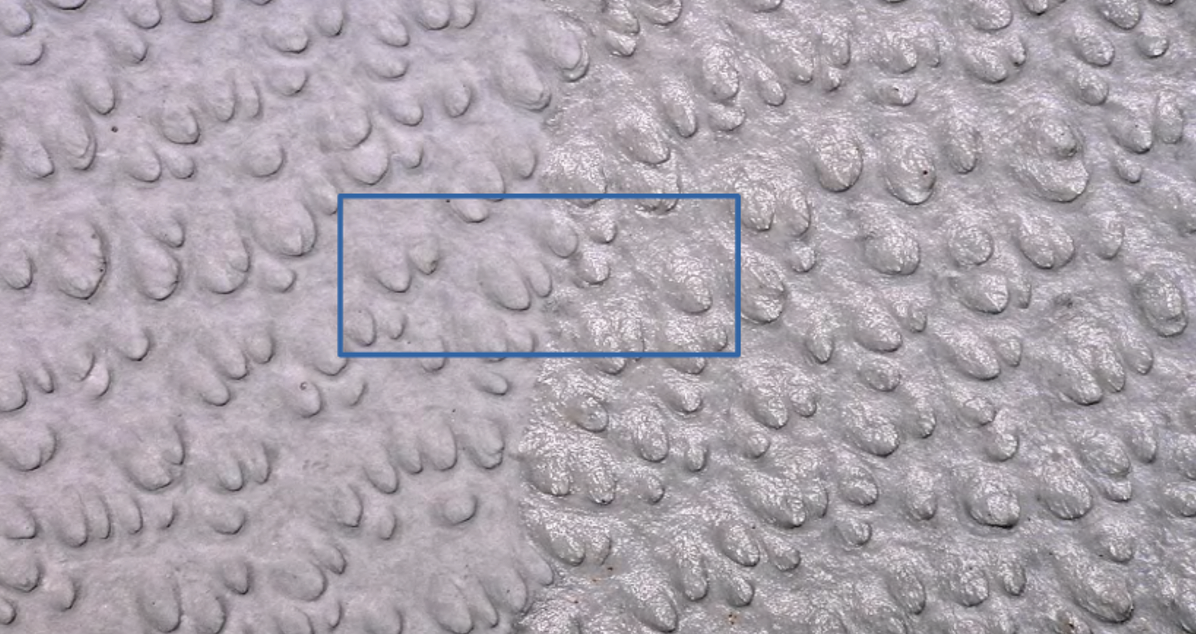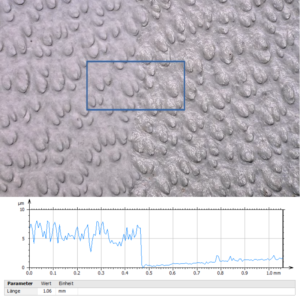The effectiveness of ASPEREX® is based on 3 mechanisms of action:
The effectiveness of ASPEREX® is based on 3 mechanisms of action:
- Antimicrobial effect due to formic acid(Formic Acid)
- Pathogen-inhibiting preventive effect due to a. Chitosan biopolymer complex.
- Pathogen-repellent lotus effect on the treated surface.
Formic acid - the acute control of microbes such as mold...
Formic acid, also known as Acidum formicicum or methanoic acid, is a colorless, corrosive liquid used by wildlife for defense purposes. It is not only produced by ants - as the name suggests - but can also be detected in the secretions of various species of bees, caterpillars and butterflies, in the venom of jellyfish and scorpions, and in the leaf hairs of stinging nettles. Formic acid can also be produced synthetically. Formic acid has a strong potent antibacterial and disinfectant effect. It is used as a biocide, but it is also used to treat skin irritations and allergies.
Formic acid is a biocide that has an antimicrobial effect. Nevertheless, it does not attack the natural microbiome as well as the cell membrane complex of the skin - the main barrier of the skin against external influences.
Chitosan biopolymer complex - the microbe-inhibiting preventive component
Chitosan is obtained as a natural resource by deacetylation from chitin. The specific antifungal and antibacterial effects of chitosan products are often compared with corresponding effects of sorbic acid (sorbates), propionic acid (propionates) or acetic acid (acetates) or ethanol in terms of their antimicrobial effects.
For companies handling food or feed, surface treatment in production and storage areas, e.g. of walls, floors, baskets, tables or other surfaces, is a priority. Among other things, it is necessary to minimize or more effectively control mold growth and the occurrence of other hazardous species - such as Legionella. This is especially true for operations with production-related warm and humid environments, such as bakeries or similar production facilities The chitosan biopolymers of bpc specialties are effective agents to persistently prevent settlement and growth of microbes, especially bacteria and mold.
Microbe-inhibiting film formations through biopolymer hydrogels.
Film formation for lasting protection: Due to its special film-forming properties, the ASPEREX® active ingredient complex forms a film on surfaces of any kind. This film is water-repellent due to its hydrogel properties and is only dissolved by water under stronger shear forces. This means that the ASPEREX® active ingredient film has ideal properties for sustainable and preventive mold prevention.
Film formation is the key to sustainable and long-lasting hygiene prevention.
The induced film formation also causes a lotus effect on the surface, so that the adhesion of contaminants even in micro-particle size is generally impeded.
ASPEREX® Products as system treatment
The ASPEREX® system application is simple, fast and sustainable -. here further to the instructions for use ...
ASPEREX® and the environment ...
All ASPEREX® products do not pose a water or environmental hazard. Storage and application are simple and non-hazardous - there are no hazardous material classes or water hazard classes to consider.
Development partner
ASPEREX® was developed in alliance with the Fraunhofer Institute for Environmental, Safety and Energy Technology UMSICHT.









